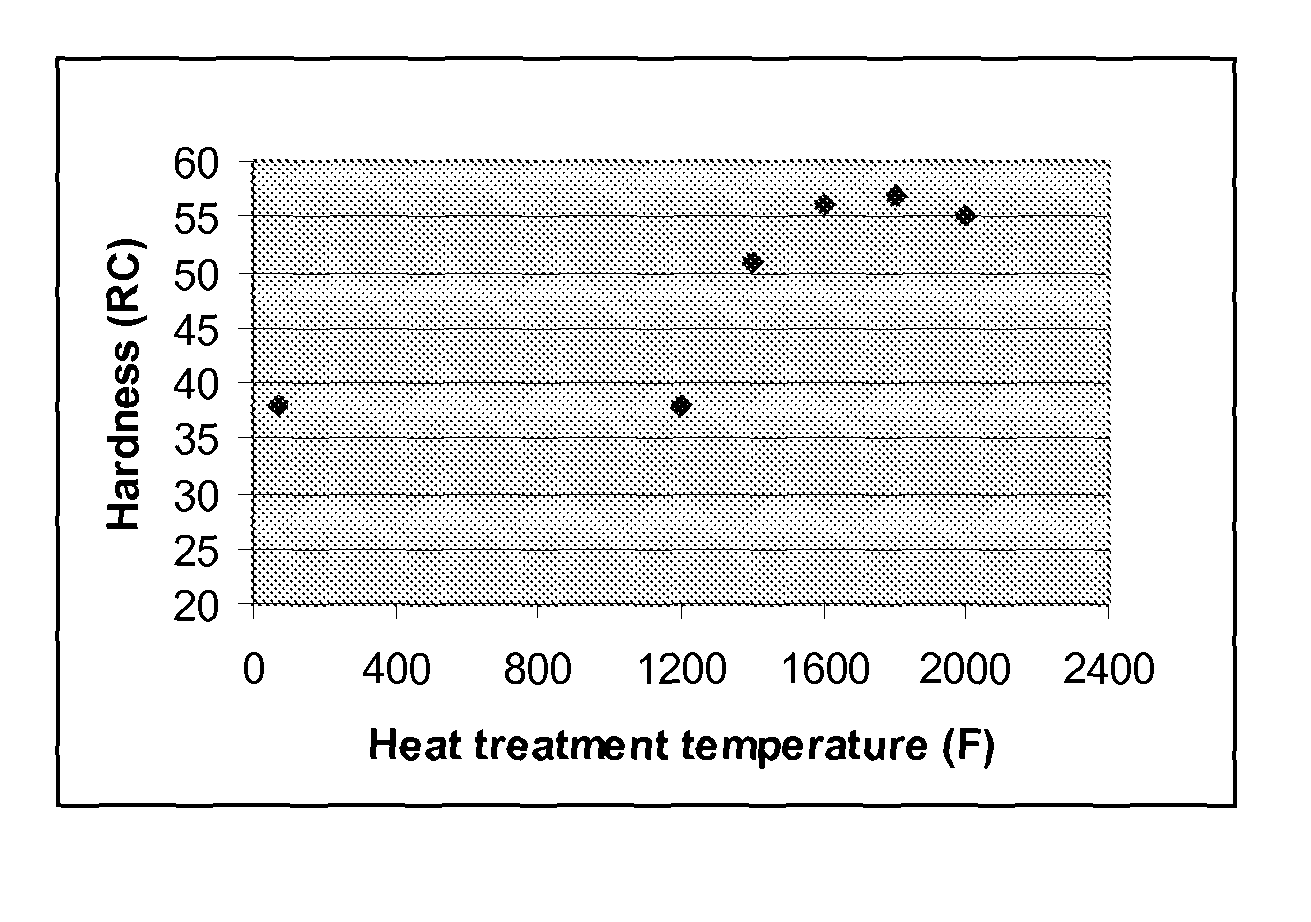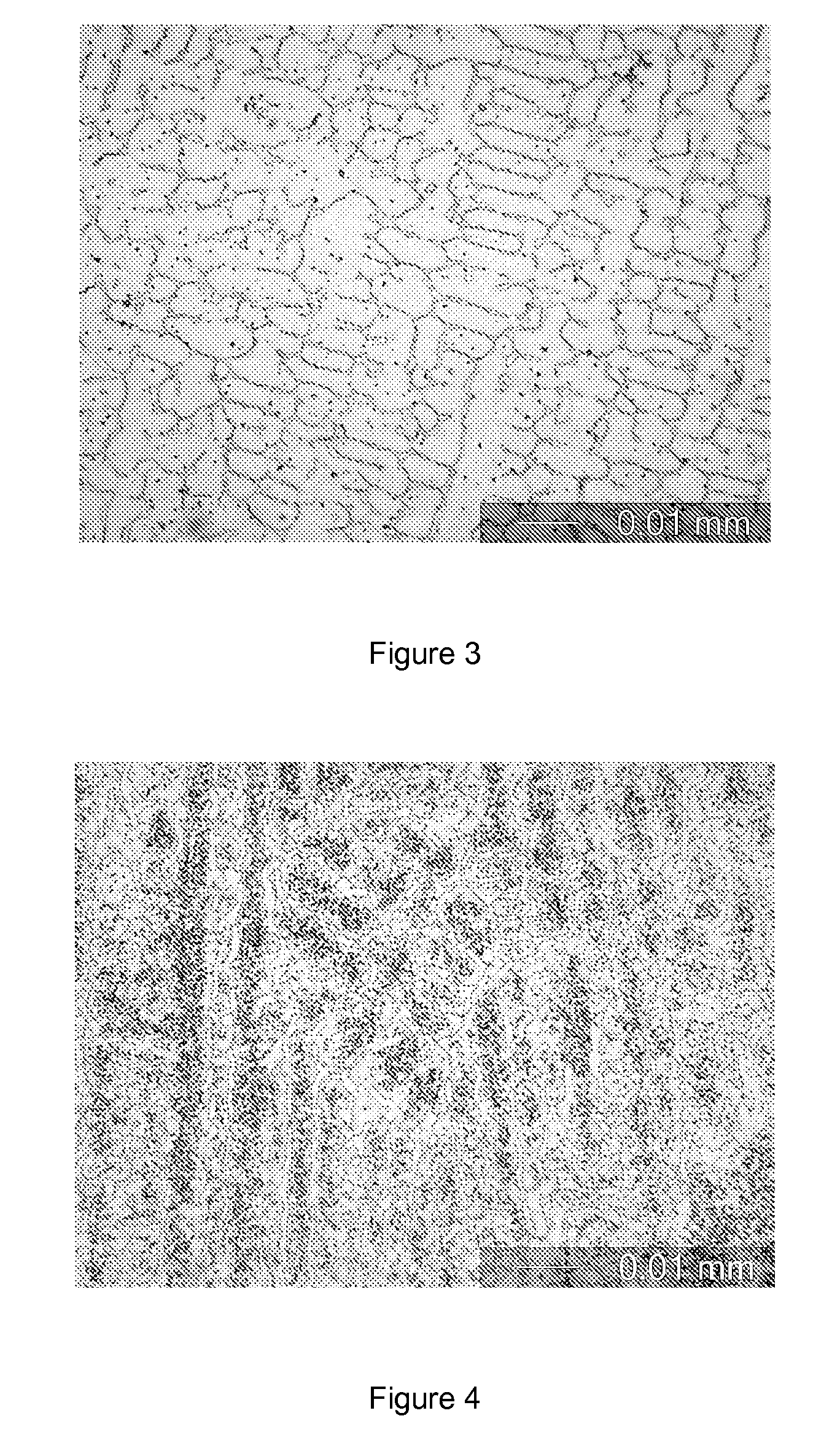Process and method to increase the hardness of Fe-Cr-C weld overlay alloy
a technology of overlay alloy and hardening process, which is applied in the field of process, can solve the problems of significant hardening produced in the metal, inability to maintain the abrasive wear resistance of the metal hardened by martensite, and inability to harden the metal by martensite thermally stable, so as to increase the hardness, increase the resistance to erosion and abrasive wear, and improve the hardness
- Summary
- Abstract
- Description
- Claims
- Application Information
AI Technical Summary
Benefits of technology
Problems solved by technology
Method used
Image
Examples
Embodiment Construction
[0025]In power boilers, carbon or low alloy steels are typical construction materials for furnace boiler tube waterwalls and superheaters / reheaters in the convection section. The outer surface of these tubes is subject to high temperature corrosive combustion products, particulate erosive matter, thermal cycling and other hostile conditions. As a result of these aggressive boiler operating conditions, carbon and low alloy steel tubes suffer high wastage rates, thus requiring frequent replacements in many critical areas. Frequent shutdowns for the boiler due to materials problems can pose a serious issue of boiler availability and maintenance cost if protection methods are not utilized.
[0026]One cost-effective protection method for these boiler tubes is to use weld overlay tubes in those critical areas where unprotected carbon or low alloy steels suffer a short service life. The weld overlay is made by applying a corrosion- or erosion / corrosion-, or erosion-resistant weld overlay ont...
PUM
| Property | Measurement | Unit |
|---|---|---|
| temperature | aaaaa | aaaaa |
| temperature | aaaaa | aaaaa |
| cryogenic temperature | aaaaa | aaaaa |
Abstract
Description
Claims
Application Information
 Login to View More
Login to View More - R&D
- Intellectual Property
- Life Sciences
- Materials
- Tech Scout
- Unparalleled Data Quality
- Higher Quality Content
- 60% Fewer Hallucinations
Browse by: Latest US Patents, China's latest patents, Technical Efficacy Thesaurus, Application Domain, Technology Topic, Popular Technical Reports.
© 2025 PatSnap. All rights reserved.Legal|Privacy policy|Modern Slavery Act Transparency Statement|Sitemap|About US| Contact US: help@patsnap.com



